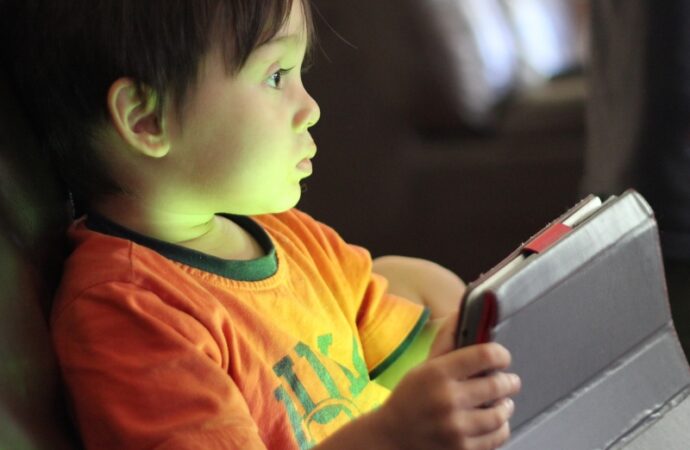“How many of you have closed your email and then immediately reopened it because you might have just gotten an email?”
Laughter rippled through the audience — including me — as we listened to Emily Cherkin give a talk at The Brearley School in Manhattan about tech and kids and us: parents, kids, educators, email addicts.
Cherkin, aka The Screentime Consultant, was a seventh-grade teacher in Seattle from 2003 to 2013. In 2003 almost none of her students had phones. By 2013, 95% did. She’s spent the 10 years since leaving the classroom studying what happens to kids and families when tech changes everything.
“I still remember an analog childhood,” she told the audience. But today’s kids won’t — unless we make sure that some of that old-fashioned, engage-with-the-world time is deliberately preserved. But at the moment? Parents are overwhelmed, as are schools.
At home, parents are finding it extremely tough to pry their kids from screens. “There’s a myth that ‘My child should be able to get off-screen without a meltdown,'” said Cherkin. “But it’s not a fair fight.” Tech companies have studied what makes an activity sticky and applied those lessons with a vengeance.
The endless scroll? The fact that one video leads instantly to another? The pings and likes and emojis? All those are part of what is called “pervasive design,” or what Cherkin calls “manipulative tech” — a mashup of psychology and technology designed to keep you engaged.
And just as it’s hard to drag a gambler from the slot machines — next time could be a winner! — it’s hard to drag our kids from their screens. (And us from our emails.) There’s a reason drug dealers use the same term for their clients as tech companies do: “users.” Both are dedicated to creating addiction.
The upshot is a phenom dubbed “displacement” — activities online displacing activities in real life. That doesn’t mean all online time is meaningless or evil. But it does mean that other things are getting squeezed out. For kids, those things include playing in real life, exploring in real life and being with their families.
How can parents make sure tech doesn’t displace too much of those? Cherkin doesn’t say to pull the plug tomorrow and go live in a yurt. But she does have some suggestions that strike me as realistic.
First, if you haven’t given your child a smartphone yet, wait as long as you can. Your kids may fear they are missing out. But ironically, the FOMO that hits once kids do get a phone is even worse. Now they can see every event they weren’t at — as well as every other fun thing in the world that they’re not part of.
If your kids already do have phones, you can set limits, even if you haven’t to date. For instance, if you don’t want the phones at dinner anymore, you can simply say, “I forgot to teach you that…” and fill in the blank: “I forgot to teach you that phones have no place at the table.” Or: “Phones don’t belong in the bedroom at night.” Or whatever you now think makes sense.
Schools, too, can help keep kids focused and actually happier by not allowing phone use during the school day. Cherkin cited a study that found kids doing worse on a math test when phones were on their desks — or even in their backpacks. The distraction was too great. They have no place in the classroom.
Then, bring back what was displaced. Keep schools open for mixed-age, no-phones free play in the afternoon or even before school. (Here’s a free guide on how to do that.) What a simple way for kids to have fun — and arguments and everything else developmentally rich — in real life.
Displace some screentime and when our kids grow up, they’ll have some analog memories from back in the day.
Then they can worry about making sure their own kids have some, too.
—
COPYRIGHT 2023 CREATORS.COM
Image credit: PxHere, CC0 1.0
















1 Comment
JW
May 2, 2023, 6:21 pmYou have to give your child something that will effectively compete with the appeal of the screen before they have access to the screen.
I didn't give my daughter a phone until 6th grade, and it was a flip phone with texting ability, but no access to internet. She could visit her friends and change plans if necessary with a phone call or text, but she wasn't distracted by Tech World.
The school gave all the kids iPads and she started becoming more enraptured by that than her usual interest in reading actual books. She collected memes and showed them to me as though it was some great discovery – even if they were funny I made it clear I wasn't impressed.
I also bought her books in a steady stream until she was once again hooked on reading. Something has to be better than screens – to be interesting and provide the same sort of "rush" that kid gets from that hypnotic little device…
It helps to be in a rural area in which you have pretty good reason to believe your child will be safe roaming around, and there are local friends whose homes they can walk to. We have parks and a little river here, and that kept her entertained. She was also raised to enjoy nature – I always took her around to whatever trails or lakes/rivers were around in the places we've lived, or took her to galleries and museums.
She also makes things – that's something kids can be engaged in early and can be cultivated as they grow. Basically you just have to support something besides tech – you have to assume responsibility for actually raising your children, rather than pass the buck to someone else.
It's not just the screens that infect our kids, but the very system in which we live – take them out of it as much as you can, and in any ways that you can, and be involved in their lives.
REPLY